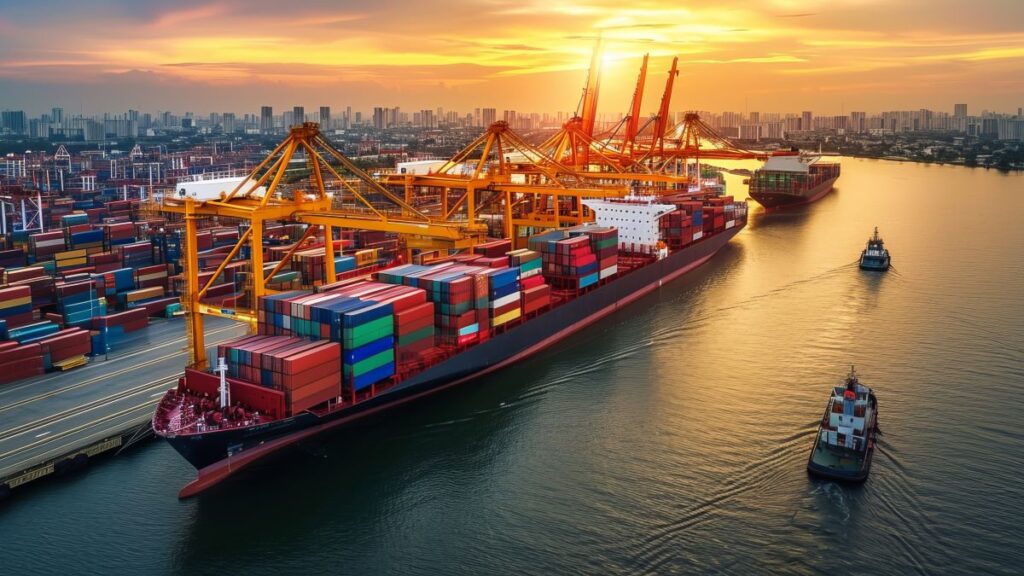
At the start of 2024, Acceleration Economy practitioner analysts each chose their top five companies to watch this year in their respective disciplines. (My focus is procurement and supply chains).
Two of my choices — project44 and FourKites — are companies that provide real-time transportation visibility platforms (RTTVPs). Traditionally, this kind of platform captured the status of inventory moving to and from manufacturers, suppliers, and distributors via road transportation. But both of these firms — and others in this segment — have made big strides toward the goal of providing visibility to the entire supply chain across all modes of transportation including ocean freight, intermodal, air, truck, and rail.
Understanding that containers can drop from sight when they arrive at a port, project44 introduced an Ocean Terminal Visibility product to provide accurate data on the status and location of containers through the terminals. All of this is focused on providing the best possible estimate of shipment arrival times.
Why is this so important? Think back to the pandemic when shortages were prevalent across nearly every kind of business, and every type of transportation was logjammed in some way. Things are chaotic and disrupted today as well.
Ask Cloud Wars AI Agent about this analysis
In the Middle East, the Houthis, an Iranian-backed terrorist group, have been attacking commercial ships in the Bab el-Mandeb Strait at the Southern tip of the Red Sea since last November. All this turmoil to the south of the Red Sea impacts the level of ship traffic through the Suez Canal, which is at the northern tip. According to Forbes, “Nearly 30 percent of global container shipping navigates through the Suez Canal via the Red Sea, carrying not only strategic resources like oil and gas but also the everyday goods and commodities that keep the global economic engine humming.” To the tune of more than $1 trillion in value.
That’s a lot of potential disruption. And a lot of extra cost. Forbes also reports:
- Shipping rates from North Asia to the East Coast of the U.S. have jumped 137% for a 40-foot container since early October, while rates from North Asia to the West Coast have seen a similar change.
- China also faces issues stemming from Red Sea disruptions, as shipping costs to Europe have more than doubled since December, posing a threat to its export-driven economy.
- Cargo insurance has increased for voyages that pass through the Red Sea. While rates were typically around 0.6 percent of the value of the cargo before the crisis, they are now up to 2 percent. Insurers have also added war risk premiums on top of the standard rate, raising the price of taking the Suez Canal route even further.
- As a result of the insurance issues, shipping lines have been using a detour around the Cape of Good Hope, adding time and freight costs.
Issues Across the Globe
On the other side of the world, low water levels around the Panama Canal have caused a reduction in the number of ships able to cross; last year’s limits were the lowest since the US invasion of Panama in 1989. With a pre-drought capacity of 38 ships per day, today’s limit sits over a third lower at 24. Such restrictions helped send dry bulk shipping costs for commodities like wheat, soybeans, iron ore, coal, and fertilizer sharply higher in late 2023.
The Panama Canal enables an estimated $270 billion a year in global trade, and restrictions primarily impact shipments to the Western US and Latin America. The Panama Canal Authority is reportedly exploring options including cloud seeding to increase rainfall or creating an artificial lake, but these would take significant time and financial resources while carrying a high risk of failure.
In late 2023, Brazil also suffered severe weather issues, with a historic drought on the Amazon at the same time that excessive rains in the north contributed to a longer-than-usual ship queue at the port of Paranagua just months before peak shipping season.
And on the geopolitical side, the future direction of China-Taiwan relations could affect trade lanes.
John Kartsonas, managing partner at Breakwave Advisors, the commodity trading advisor for the Breakwave Dry Bulk Shipping ETF, sums up the situation by saying, “You can always say, ‘It’s a one-off event,’ but if the one-off events happen every other month, they’re not anymore one-off events.”
To summarize:
- Overall transit time is increasing
- Transport loads are more expensive as they absorb the cost of traveling growing distances
- Between geopolitical and climate factors alone, there are increasing variables that can disrupt transit
There are always many worthy projects competing for investment in a company. But with this level of disruption, now is the time to make sure you have visibility into your transportation activities and are tracking to ensure that you are optimizing your ability to meet service commitments. An RTTVP may be the solution.











